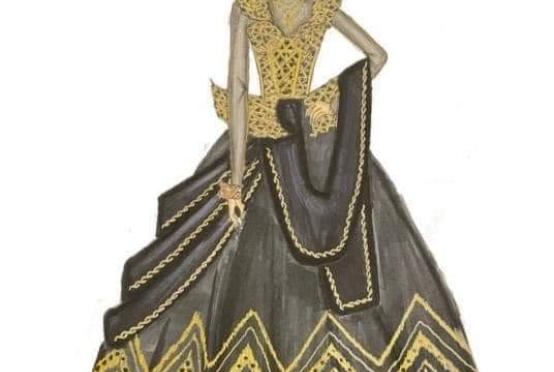
(The Kathmandu Post/ANN) - In November 2017, when actor Reecha Sharma expressed discontent at the portrayal of a female character in the film Chhakka Panja, the filmmakers didn’t take it lightly. In a coordinated campaign, the director and actors all banded together on social media to hound Sharma, supported by their fans. Chhakka Panja, the directorial debut of Deepa Shree Niraula, went on to become one of the biggest blockbusters of 2016, and Sharma’s criticism was just a blip on the film’s trajectory.
“I asked Deepa didi, how can you make such a film, where a female character agrees to marry a man on the condition that he gets to slap his wife every night,” Sharma had said about the film, during a panel discussion at the Ekadeshma International Short Film Festival. “I was so angry at the audiences’ reaction to the scene--both men and women--who were applauding with enjoyment. And I felt like a fool.”
The public rivalry between Sharma and the Chhakka Panja film crew overshadowed what was Sharma’s larger point of criticism--the stereotypical and at times harmful, representation of women in Nepali films.
Even as women like Niraula are helming some of the Nepali film industry’s biggest hits, the film industry continues to portray women in restrictive and stereotypical roles, as the critics have pointed out time and again. Most contemporary Nepali films maintain the traditional demarcation between male and female roles. Male characters are portrayed as dominant, independent, aggressive and are always tasked with ‘protecting’ the woman. Likewise, female characters are naive, lack agency and are victims of various situations, needing to be rescued in one way or another. Recent films, including Garud Puran (2019), Dreams (2016), Purano Dunga (2016), Kabaddi (2013) contain most if not all of these characteristics. And even when filmmakers attempt a more female-centric film, like the recent Saili (2019), they are often found failing because they do not employ women in critical roles like writing.
Numerous films are casually misogynist, where little thought appears to have gone into how certain characters must be portrayed. Dialogue such as “Girls are like chewing gum--sweet at the beginning but dull at the end” from Dreams, “Your breasts are like footballs” in Captain (2019), and “If a woman goes and works, what about my manhood” in Saili—all portray a narrow definition of what is considered acceptable behaviour for a protagonist.
“There are mainly two types of women that are represented in our films—one where they don't speak up and give in to patriarchy, and the other where they are desired as objects of the male gaze or sex toys,” said Sharma in an interview with the Post. “This has been the norm in commercial films, primarily due to the fact that most films are written, directed, acted and produced by men, and from the male perspective.”
Priyanka Karki, one of the most popular actors in the industry, agrees with Sharma, even though she was once part of the Chhakka Panja crew that had rallied against Sharma. Karki too believes that there isn’t much development for the female characters she plays in films.
“Women are often put into stereotypical roles that create shallow, one-dimensional characters that viewers may not even relate to,” said Karki.
Along with major societal changes, the Nepali film industry has evolved, but not enough, say critics.
“It’s not like we don’t have female actors in movies, it's just that these women either have to give in to the roles because it’s their bread and butter or because they cannot be too ‘interfering’,” said Sharma. “I am usually called someone who interferes with the script a lot because often, the story is too stereotypical. I sometimes choose not to do such films at all.”
Recently, actors such as Menuka Pradhan and Swastima Khadka have attempted to bring nuances to their characters, in films such as Saili and Bulbul (2019), despite limited writing. But actor-director Rekha Thapa, who’s been in the industry for nearly 20 years, has long been campaigning for more women-centric films and roles in the Nepali film industry. A number of the films she’s acted in and directed, like Himmatwali (2014) and Rampyaari (2016), have featured strong women in leading roles.
“Most Nepali movies show our women to be weak creatures,” said Thapa. “But I strongly believe that most women aren't submissive to men's desires so it's important to display women as a lot more than just cosmetic, dependent beings.”
Such films, however, are anomalies, when compared with the 80 plus films the industry puts out every year. For instance, Daya Ram Dahal’s Raani (2017), starring Malina Joshi, was supposed to be centred around an independent woman. But this movie too fell victim to easy caricatures, portraying the mother-in-law as an evil, manipulative creature who exists simply to torment the daughter-in-law.
With so many movies constructed along stereotypical portrayals of women, it is no surprise that empowering films get lost in the crowd.
“What I’ve learnt from watching Nepali movies is that women are usually housewives and submissive to their husband’s or society’s wishes,” said Pallavi Bhui, 18, a regular visitor to the theatres. “This is quite contradictory to the present scenario where women are reaching new heights in their careers. It seems we live in the dark ages when we’re asked to represent women.”
But Niraula, director of the Chhakka Panja series and one of the few women directors in the film industry, defends her work against the criticism of women like Sharma. “Movies reflect what is happening in society,” she told the Post. “It's not misogynistic to show women down in one part but coming to power later. We've received praises from various people and no one thinks it [Chhakka Panja] to be a movie where the woman’s perspective isn't considered.”
The most prominent feature of Nepali films is that women do ‘women things’ while men do ‘men things’. Even popular films like Kabbadi show women as timid beings, restricted to the roles of housewives, bratty sisters or dutiful daughters but at the same time, also objectified as objects of desire.
But at the same time, the portrayal of men in films isn’t all that progressive either. Men are hyper-aggressive and overtly masculine. They are more often in roles of power, success and dominance, consistently displayed as protectors. Nepali films have also learned from Bollywood, where the ‘hero’ must harass and stalk the women in the film in order to win them over.
“Movies have shown that I need to gaze at a woman for too long and follow them around to show my dedication and gain their love, not realising it is actually a crime and makes the other person uncomfortable,” said Swarnim Bhattarai, 24, from Bhaktapur.
Films like Bulbul are trying to break gendered stereotypes, especially when it comes to the traditional demarcations between men’s work and women’s work. But even here, as the Post’s film critic Abhimanyu Dixit pointed out, that the film’s lead, Ranakala’s “poverty, nursing a family member and falling for a man who gives her attention are all very generic tropes that make Ranakala seem like a caricature of a ‘low income but independent woman’.”
For actors like Thapa, Karki and Sharma, all outspoken, independent women, it can be difficult to remain in an industry that is rife with such stereotypes.
“We cannot change the script. All we can do is make small changes to our character and hone the way we present them,” said Karki. “I, too, feel that movies don’t have much to do with the present society. But we can move ourselves into filmmaking and direct our perspective on screen. That’s what I am doing now.”
Many male filmmakers, too, agree with the actors’ criticism. Subash Koirala, director most recently of Garud Puran (2019), acknowledges films mirror society but doesn’t seem to have internalised how society has changed. Garud Puran was lambasted by Dixit for being “carelessly-written, badly-acted and casually misogynistic.”
Diwakar Bhattarai, co-director of the film Dreams, too admits to wanting to make films that are different.
“We acknowledge the rise of empowered and independent women in society and the feminist wave,” said Bhattarai. “We will try to make movies that don’t solely rely on the male perspective but rather endorse the female’s perspective as well.”
But Sharma points out that as long as such movies remain commercially successful, there is little incentive for writers, directors and producers to change their ways. Films do reflect society and perhaps the misogyny inherent in society is what is reflected in films. So Sharma advocates for actors and directors themselves to work to make progressive changes.
“The most important power filmmakers and actors have is their popularity. If actors like Anmol KC and famous directors use their image to make movies that don't give in to traditional stereotypes, we'll only then raise the quality of our cinema,” said Sharma.
Thapa too believes that films can lead to change and that it is important for films to be progressive, no matter the state of society.
“When a crime like domestic violence or rape is shown on film and the guilty is let off, it leads viewers to believe that they too can get off without facing punishment. Movies can help people change their perspective,” she said.
For Thapa, who’s long cemented her reputation as an iconoclast, misogynist films don’t reflect society, but rather the mindset of the filmmakers.
“Filmmaking is a creative field and films display the state of mind of the directors and writers,” said Thapa. “When a director chooses to display misogyny or objectify women for humour, it's not the society that is reflected, but rather their own mindset.”










